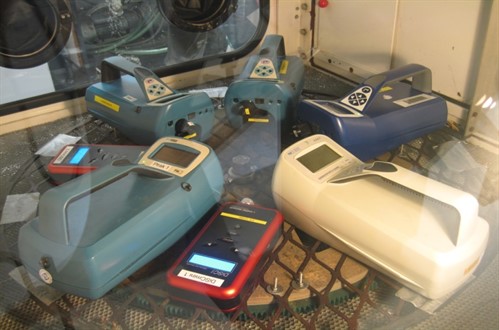HSE Health Group maintains
around 40 hand-held and benchtop aerosol instruments, which provide
the capability to measure mass, number and surface area
concentrations, from nm to µm.
The accurate, robust performance of
real-time mass or number concentration instruments is dependent on
regular maintenance and calibration. However, the performance can
deteriorate within the manufacturer recommended calibration period,
particularly if the instrument has been exposed to particulates in
an environment of high concentration, or exposed for extended
periods. In addition, low cost sensor devices are so inexpensive
that service or calibration is not supported by the manufacturer.
Therefore, it is even more important for those devices to have a
procedure/methodology in place to check for performance drift.
As part of a wider aim to develop a
system to monitor, record and maintain direct reading time-resolved
instrumentation, a benchmarking method for checking the performance
of such instruments using a calm air chamber, was also an objective
of the work.
Instruments were simultaneously
benchmarked against a calibrated reference instrument, within a
calm air dust chamber, at a wide range of concentrations of a
suitable test aerosol.

Photometers and Optical Particle
Counters (OPC) were benchmarked, using SPHERIGLASS ® A-5000 as the
test aerosol, against a reference photometer or OPC, not
necessarily of the same model or size range characteristic.
For Condensation Particle Counters
(CPC) and Diffusion Chargers, measuring in the nanometer size
range, the test aerosol was a NaCl solution with a mode at
approximately 40 nm, generated using a Collison nebulizer. A
calibrated CPC was used as a reference instrument.
For each photometer model, an
average ratio of the evaluated photometer concentrations to the
reference photometer concentration was calculated. A linearity
curve was established to evaluate photometer concentration versus
reference photometer concentration.
The concentrations measured with
the CPCs all showed results within 9% of the reference CPC, and
with the diffusion chargers the deviation from the reference CPC
was less than 19%.
The benchmarking method is a useful
test as part of a laboratory procedure checking of real-time
instruments.